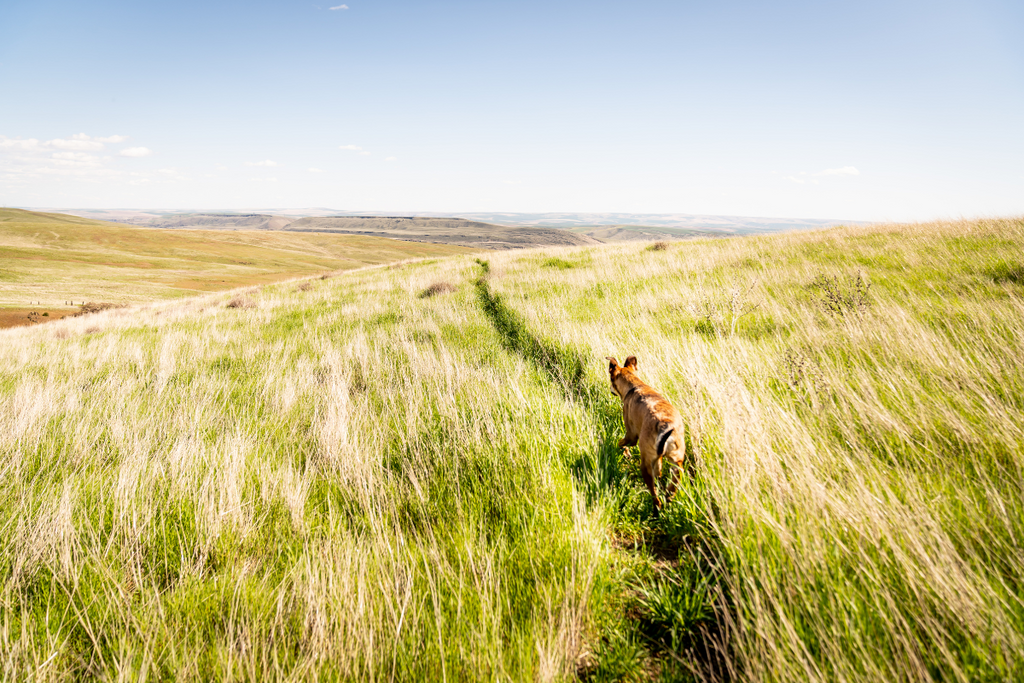During the warmer months, it's common for pets to pick up grass seeds while they're exploring outdoors. Unfortunately, these seeds can easily attach to their fur and have sharp pointed ends, so they can penetrate their skin or even get stuck in their ears.
If left untreated, grass seeds can lead to problems ranging from minor irritation to severe conditions requiring surgery. In addition, they can carry bacteria that may cause an infection if they break the skin. If an infection is left untreated, it can spread or even cause severe internal damage as the seed moves through the body.
If your pet is affected, surgery might be necessary to find the grass seed and antibiotics and antifungals may be required for treatment. It's essential to keep a close eye on your pet during this time of year and seek prompt veterinary care if you suspect they've picked up a grass seed.

Symptoms
The symptoms your pet experiences from grass seeds can vary based on which part of their body is affected. Here's a breakdown of potential signs and damage to different areas:
- Paws - Symptoms include licking, redness, or swelling. A seed lodged in a ligament or tendon can cause severe pain.
- Skin - Watch for licking, redness, swelling, or a seed sticking out. Possible damage includes open sores and internal tissue damage or infection if the seed penetrates the skin.
- Coat - Look for loose seeds on the coat. The seed may move onto the skin, causing damage if lodged in your pet's body.
- Mouth - Watch for coughing, struggling to eat or swallow. A seed in the mouth or throat can cause tonsil inflammation or internal tissue damage to organs.
- Nose - Look for sneezing, discharge, or difficulty breathing. A grass seed in the nose or airway can lead to lung infection, airway blockage, pneumonia, or internal tissue damage.
- Genitals - Signs include swelling, difficulty urinating, or blood in the urine. A grass seed in the genital area could cause permanent internal or external damage that may require surgery.

How to get rid of grass seeds
If you suspect your pet has a grass seed on or inside their body, it's best to take them to the vet immediately. Grass seeds can be challenging to remove, especially if they have already penetrated the skin. If you notice a grass seed tangled in your pet's coat, removing it immediately with a pair of tweezers to prevent it from causing any further harm is essential.
If you notice signs of inflammation, redness or swelling in your pet but cannot locate a grass seed, it's crucial to take them to the vet immediately. It's possible that the grass seed has penetrated the skin and entered its body. In such cases, surgical investigation may be necessary to locate and remove the grass seed.
Keep Your Pet Safe
There are several steps you can take to lower the risk of your pet picking up grass seeds:
- Post-walk inspections - After your walk, check your pet's body thoroughly for any grass seeds. Pay extra attention to the eyes, ears, nose, armpits, and paws. Be sure to look for symptoms such as redness or swelling.
- Keep away from long grass areas - Walking where the grass has been cut short decreases the chance of grass seeds latching onto your pet.
- Routine grooming - Grooming your pet can help identify grass seeds early. Clipping long hair around the paws and ears can prevent grass seeds from getting caught.
If you're looking for additional protection for your pet while on walks, consider purchasing a vest that covers your pet's chest and abdomen to provide barrier-type protection. Also, use doggy boots that are thick enough to prevent grass seeds from poking through and getting stuck in their feet.
In the meantime, we encourage you to have a look at our shampoo section which could very much help you in the removal of grass seeds and other parasites.

